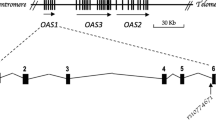Abstract
Mild factor XIII deficiency is an underdiagnosed coagulation disorder. Considering the large number of coding and non-coding polymorphisms identified in the F13A1 gene, there is a possibility that some of these might result in alterations of plasma FXIII levels and cause mild FXIII deficiency. Recently, a homozygous F13A1 gene intron 1 variant (IVS1+12C>A) was found in a patient with FXIII deficiency. In vitro expression studies for this variant demonstrated its lowering effect on FXIII levels. In order to determine the impact of this variant on a population level, we analysed the prevalence of this variant in three clinically and genetically defined population cohorts: an apparently healthy control cohort C1 (n = 102), a mild FXIII deficiency cohort C2 with no detectable F13A1 or F13B gene mutations (n = 183) and a mild FXIII-A deficiency cohort C3 exhibiting heterozygous F13A1 mutations (n = 37). FXIII activity was determined using photometric assay on plasma samples. The F13A1 gene intron 1 variant was analysed by direct sequencing. The C1 cohort showed a normal distribution of FXIII activity (mean 114.1 ± 20.86 %). Mean FXIII activity levels for the C2 and C3 cohorts were 54.45 ± 11.12 % and 44.21 ± 10.16 %, respectively. The frequencies of minor allele (A) were 0.07 in C1 cohort, 0.19 in C2 cohort and 0.11 in C3 cohort. The difference in minor allele frequencies for the C1 and C2 cohorts were highly significant (p < 0.001). The greater frequency of the IVS1+12(A) variant among C2 cohort patients suggests that this polymorphism is associated with mild FXIII deficiency.
Similar content being viewed by others
References
Saha N, Aston CE, Low PS, Kamboh MI (2000) Racial and genetic determinants of plasma factor XIII activity. Genet Epidemiol 19(4):440–455
Ariens RA, Kohler HP, Mansfield MW, Grant PJ (1999) Subunit antigen and activity levels of blood coagulation factor XIII in healthy individuals. Relation to sex, age, smoking, and hypertension. Arterioscler Thromb Vasc Biol 19(8):2012–2016
Iwata H, Kitano T, Umetsu K, Yuasa I, Yamazaki K, Kemkes-Matthes B, Ichinose A (2009) Distinct C-terminus of the B subunit of factor XIII in a population-associated major phenotype: the first case of complete allele-specific alternative splicing products in the coagulation and fibrinolytic systems. J Thromb Haemost 7(7):1084–1091
Muszbek L, Bereczky Z, Bagoly Z, Shemirani AH, Katona E (2010) Factor XIII and atherothrombotic diseases. Semin Thromb Hemost 36(1):18–33
Ivaskevicius V, Biswas A, Bevans C, Schroeder V, Kohler HP, Rott H, Halimeh S, Petrides PE, Lenk H, Krause M, Miterski B, Harbrecht U, Oldenburg J (2010) Identification of eight novel coagulation factor XIII subunit A mutations: implied consequences for structure and function. Haematologica 95(6):956–962
Ivaskevicius V, Biswas A, Loreth R, Schroeder V, Ohlenforst S, Rott H, Krause M, Kohler HP, Scharrer I, Oldenburg J (2010) Mutations affecting disulphide bonds contribute to a fairly common prevalence of F13B gene defects: results of a genetic study in 14 families with factor XIII B deficiency. Haemophilia 16(4):675–682
Biswas A, Ivaskevicius V, Seitz R, Thomas A, Oldenburg J (2011) An update of the mutation profile of factor 13 A and B genes. Blood Rev 25(5):193–204
Ivaskevicius V, Seitz R, Kohler HP, Schroeder V, Muszbek L, Ariens RA, Seifried E, Oldenburg J, Study Group (2007) International registry on factor XIII deficiency: a basis formed mostly on European data. Thromb Haemost 97(6):914–921
Wang W, Huang L, Ma Q, Xiao D, Chen X, Yang Z, Wang X, Zhou K, Li G, Xiao M, DuG HX, Cai W (2011) Homozygous intronic mutation leading to inefficient transcription combined with a novel frameshift mutation in F13A1 gene causes FXIII deficiency. J Hum Genet 56(6):460–463
Fickenscher K, Aab A, Stuber W (1991) A photometric assay for blood coagulation factor XIII. Thromb Haemost 65(5):535–540, 6
Miller SA, Dykes DD, Polesky HF (1988) A simple salting out procedure for extracting DNA from human nucleated cells. Nucleic Acids Res 16(3):1215
Ivaskevicius V, Windyga J, Baran B, Schroeder V, Junen J, Bykowska K, Seifried E, Kohler HP, Oldenburg J (2007) Phenotype-genotype correlation in eight Polish patients with inherited factor XIII deficiency: identification of three novel mutations. Haemophilia 13(5):649–657
Rodriguez S, Gaunt TR, Day IN (2009) Hardy–Weinberg equilibrium testing of biological ascertainment for Mendelian randomization studies. Am J Epidemiol 169(4):505–514, 15
Suzuki K, Iwata M, Ito S, Matsui K, Uchida A, Mizoi Y (1994) Molecular basis for subtypic differences of the “a” subunit of coagulation factor XIII with description of the genesis of the subtypes. Hum Genet 94(2):129–135
Suzuki K, Matsui K, Ito S, Fujita K, Matsumoto H (1988) Polymorphism of the A subunit of coagulation factor XIII: evidence for subtypes of the FXIIIA*1 and FXIIIA*2 alleles. Am J Hum Genet 43(2):170–174
Attié-Castro FA, Zago MA, Lavinha J, Elion J, Rodriguez-Delfin L, Guerreiro JF, Franco RF (2000) Ethnic heterogeneity of the factor XIII Val34Leu polymorphism. Thromb Haemost 84(4):601–603
Wartiovaara U, Mikkola H, Szôke G, Haramura G, Kárpáti L, Balogh I, Lassila R, Muszbek L, Palotie A (2000) Effect of Val34Leu polymorphism on the activation of the coagulation factor XIII-A. Thromb Haemost 84(4):595–600
International HapMap C (2003) The International HapMap Project. Nature 426(6968):789–796, 18
Ethical standard
Informed consent was obtained from all patients for being included in the study.
Conflict of Interest
The authors have no competing interests.
Author information
Authors and Affiliations
Corresponding authors
Additional information
Vytautas Ivaskevicius and Arijit Biswas are first authors and equally contributed to this study.
Rights and permissions
About this article
Cite this article
Ivaskevicius, V., Biswas, A., Thomas, A. et al. A common F13A1 intron 1 variant IVS1+12(A) is associated with mild FXIII deficiency in Caucasian population. Ann Hematol 92, 975–979 (2013). https://doi.org/10.1007/s00277-013-1724-2
Received:
Accepted:
Published:
Issue Date:
DOI: https://doi.org/10.1007/s00277-013-1724-2




